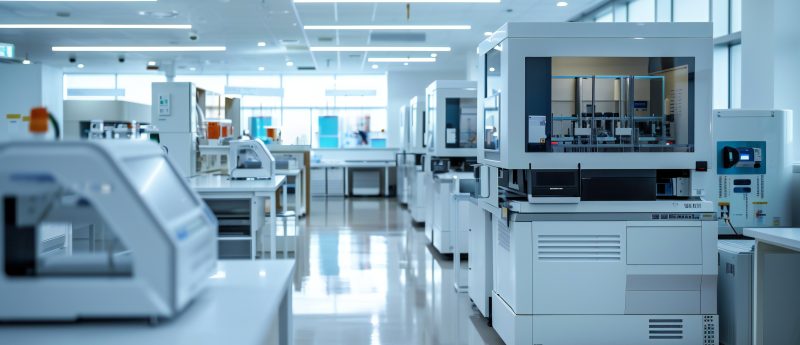What questions can be answered by hybrid LBA/LC–MS assays over traditional bioanalytical techniques?

Fabrizia Fusetti (QPS)
“Within a hybrid LBA/LC–MS assay, whether based on a top-down or bottom-up approach, it is possible to achieve an additional level of specificity and selectivity in addition to the enrichment for functional drug. The combination of the two techniques can provide more precise molecular and structural details. The added ability to multiplex provided by LC–MS can help in addressing simultaneous PK assessment of co-administered biotherapeutics, even if highly similar in structure or mechanism of action.
Access to complementary information will contribute to the molecular understanding of drug efficacy and exposure in relation to the fraction of drug available (ability to distinguish between total, free, and bound drug).”
Eric Ma (PPD)
“Multiplexing capacity: can the method accurately measure co-dosed therapeutics?
LBA has very limited capability for multiplexing due to cross reactivity [1] and associated costs of developing highly specific capture and detection reagents. In contrast, LC–MS, due to its selectivity, can simultaneously analyze multiple compounds without additional cost. For instance, two IgG proteins with only four amino acid differences were successfully quantified with a single hybrid immunoaffinity/LC–MS method [2].Multi-attribute determination: can the assay provide information on the metabolic stability of multivalent biotherapeutics?
In general, a natural antibody only recognizes a single binding site on an antigen protein.Multivalent biotherapeutics, such as bi-specific and tri-specific antibodies are currently being developed to improve drug efficiency. For example, a tri-specific antibody, designed to act against HIV viruses, can identify three different sites on the same molecule [3]. For proteins with multifunctional domains, it is important to monitor the dynamic changes of each functional unit during a PK/PD study. With a hybrid immunoaffinity/LC–MS approach, through the use of unique signature peptides from each segment, the concentration of each region can be simultaneously determined. Therefore, the metabolic stability for each domain can be monitored.Assay interferences: Is the analyte quantitation impacted by antidrug antibodies (ADAs) and/or endogenous binding proteins?
Commonly used sample purification approaches for LC-MS bioanalysis of biologics includes generic immunoaffinity capture using protein A or protein G beads and protein precipitation. With those sample preparation approaches, the impact of ADAs and endogenous binding proteins is minimized or even eliminated. For example, a study by Wang et al. [4] on the quantification of a poly ethylene glycosylated scaffold protein drug in monkey plasma samples, indicated that concentrations obtained by the LC–MS/MS and ELISA methods showed excellent agreement at earlier time points through 96 hours. However, for the later timepoints, concentrations from the LC–MS/MS method were significantly higher than those from the ELISA method. Investigation demonstrated that the concentration discrepancy between the two methods was due to the development of ADAs over time after drug dosing. The presence of ADAs specific to the antigen-binding region of the protein drug interfered with the binding of the drug to the target antigen used in the ELISA method. As a result, ELISA measured only free drug. In contrast, for the LC–MS method, because the whole plasma was extracted and digested, the total concentration (free and ADA bound) was measured.”
Olivier Heudi (Novartis)
“With new modalities, such as modified antibodies, ADC, ADDC or hybrid LBA/LC–MS, it is essential to have a good understanding of the behavior of the entire molecule. Hybrid LBA/LC–MS can provide structural information of these types of molecules, especially if the LBA/LC–MS/MS assay is designed to analyze the intact molecule. Hybrid LBA/LC–MS can be also used to assess the immunogenicity with acceptable specificity and drug tolerance, with the possibility of multiplexing the detection of ADA isotypes.”
Steven Piccoli (GSK)
“Most technologies do one thing well and are thus restricted to a fairly narrow area of analysis, but generally more capability is needed to accurately characterize or measure a single component of an extremely complex biological system. Conventional wisdom avows that LBAs have insufficient specificity to unambiguously identify a target due to interferences in a multifaceted biofluid milieu, while LC–MS has insufficient sensitivity to detect the interesting targets functionally active in the pico- or femtomolar concentration range. One might easily suspect that the inherent strengths of each technology when combined would produce a higher performance assay than either alone. In fact, it is the putative weaknesses of each individual technology that enable the synergistically enhanced performance of the hybrid assay, as the specificity (not sensitivity!) of the LBA is used to deliver a more concentrated and less chemically complex sample to the mass spectrometer enabling an increase in sensitivity due to the decreased need for specificity – the best of both worlds!”
References
[1] Kumar S, King LE, Clark TH et al. Antibody–drug conjugates nonclinical support: from early to late nonclinical bioanalysis using ligand-binding assays. Bioanalysis. 7(13): 1605–1617 (2015).
[2] Ma E et al. Multiplexed Quantitation of Highly Homologous mAbs in Human Serum. Programme and Abstracts of the 11th Workshop on Recent Issues in Bioanalysis. Los Angeles, CA, USA, 3–7 April 2017.
[3] Xu L, Pegu A, Rao E et al. Trispecific broadly neutralizing HIV antibodies mediate potent SHIV protection in macaques. Science, 358(6359): 85–90 (2017).
[4] Wang SJ, Wu ST, Gokemeijer J et al. Attribution of the discrepancy between ELISA and LC-MS/MS assay results of a PEGylated scaffold protein in post-dose monkey plasma samples due to the presence of anti-drug antibodies. Anal. Bioanal. Chem. 402(3): 1229–39, (2012).

![Eric_Ma[1]](https://www.bioanalysis-zone.com/wp-content/uploads/2019/09/Eric_Ma1-206x300.jpg)





